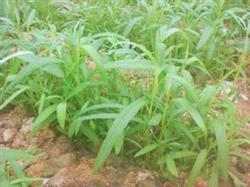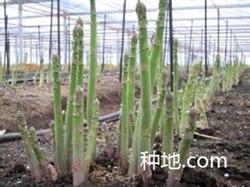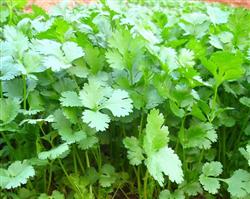Introduction: planting technology of asparagus

When it comes to the year when hollow vegetables are on the market, the following introduces the planting methods of hollow vegetables: water spinach, also known as water spinach, has a long harvest time and is a leafy vegetable growing in summer. it can break the structure of low-leaf vegetables and multi-pod vegetables in summer in the north, and is not restricted by high temperature and rainstorm. As a result, the north began to introduce and cultivate, and achieved success. 1. Cultivation season and cultivation methods: open field cultivation of asparagus can be carried out from spring to summer, and annual production can be achieved and supplied to the market at any time if cultivated in greenhouses, greenhouses and small sheds according to market needs. Second, cultivation techniques 1. Soil preparation and sowing in the north generally adopts the way of direct seeding. Turn the soil deeply before sowing, apply 2500-3000 kg per mu of rotten organic fertilizer or 1500-2000 kg of human feces and urine, 50-100 kg of plant ash, and rake flat and fine after mixing with the soil. Before sowing, the seeds were first treated, that is, they were soaked in warm water for 30 minutes, then soaked in clean water for 20 to 24 hours, picked up and washed and placed at a temperature of about 25 ℃ to accelerate germination. During the period of germination, the seeds should be kept moist, washed with clean water once a day, and then sowed after the seeds broke their skin and white spots. The amount of seed used per mu is 610kg. Sowing is generally densely planted with strip sowing, with a row spacing of 33 cm and covered with soil after sowing. You can also use sowing or burrowing. 2. There is a great demand for fertilizer and water for asparagus in field management. in addition to applying sufficient base fertilizer, it is also necessary to topdressing. When the seedlings grow to 5-7 cm, they should be watered and fertilized to promote seedling growth. In the future, the soil should be watered regularly to keep the soil moist. Fertilizer should be applied twice after each picking, and should be diluted first and then concentrated, mainly nitrogen fertilizer, such as urea and so on. It is necessary to plough and weed in time during the growth period, and there is no need for weeding and ploughing after ridge closure. The principle of asparagus management is: fertilizing more and picking frequently. The main diseases and insect pests of Chinese cabbage are white rust, cabbage worm, Spodoptera litura larvae and so on. Pieris rapae and Spodoptera litura larvae can be controlled with 8000 times of 20% Spodoptera litura. White rust can be controlled with 1 ∶ l ∶ 200 Bordeaux solution or 0.2 degree stone sulfur mixture, or 65% Dysen zinc 500 times solution, sprayed once every 10 days to control the development of the disease. 3. If the harvested hollow cabbage is harvested at one time, it can be harvested and listed at one time when the plant height is 20cm to 35cm. If it is harvested many times, the seedlings can be harvested at a height of 12 cm to 15 cm, and the seedlings can be put on the market; when the height of the plant is 18 cm to 21 cm, the seedlings can be pulled out and listed on the market, and the seedlings left behind can be harvested and listed many times. When the seedling grows to 33 cm high, the first picking leaves two stem nodes in the stem, the second picking will harvest the second section left by the stem, and the third picking will harvest the first stem left at the base of the stem to reach the base of the stem to sprout again. In this way, the stems picked in the future can be kept stout. When picking, it is more appropriate to pick by hand, if you use knives and other iron tools, it is easy to rust and die. Generally, the yield per mu of one-time harvest can reach 1500 kg, and the yield of multiple harvest can reach 5000 kg per mu.
- Prev

Asparagus planting method
Ask: asparagus planting method, the more detailed the better, is there any technology available? Asparagus is one of the most efficient cash crops, ranking first among the top ten famous dishes in the world, and enjoys the laudatory name of "king of vegetables" in the international market. Asparagus is rich in albumin and a variety of amino acids, which can inhibit the growth of cancer cells.
- Next

Key points of coriander cultivation techniques
As a seasoning vegetable, coriander is rich in nutrition and simple in cultivation and management. the key points of coriander cultivation techniques are introduced as follows: the characteristics of parsley belong to Umbelliferae. It can withstand the low temperature of-1 ℃ to 2 ℃, and the suitable growth temperature is from 17 ℃ to 20 ℃. It grows slowly when it exceeds 20 ℃, and stops growing when it is 30 ℃. Coriander to soil.
Related
- Where is it suitable to grow horseradish in China? it is expected to see the middle altitude horseradish in Alishan.
- How to prevent tomato virus disease reasonably? (Control methods included)
- Many people like to plant towel gourd on the balcony. What are the main points of this method and management?
- What crops can chili peppers be mixed with?
- Fertilization techniques and matters needing attention in Tomato
- What are the grafting techniques for peach seedlings in spring?
- Harm and control methods of root swelling disease of Chinese cabbage
- What are the pests of sweet potatoes? How to prevent and cure it?
- Symptoms, causes and Control methods of navel Rot in Tomato
- The cause of "Cucumber rotten bibcock" in Farmers' planting Cucumber and its Control Plan

